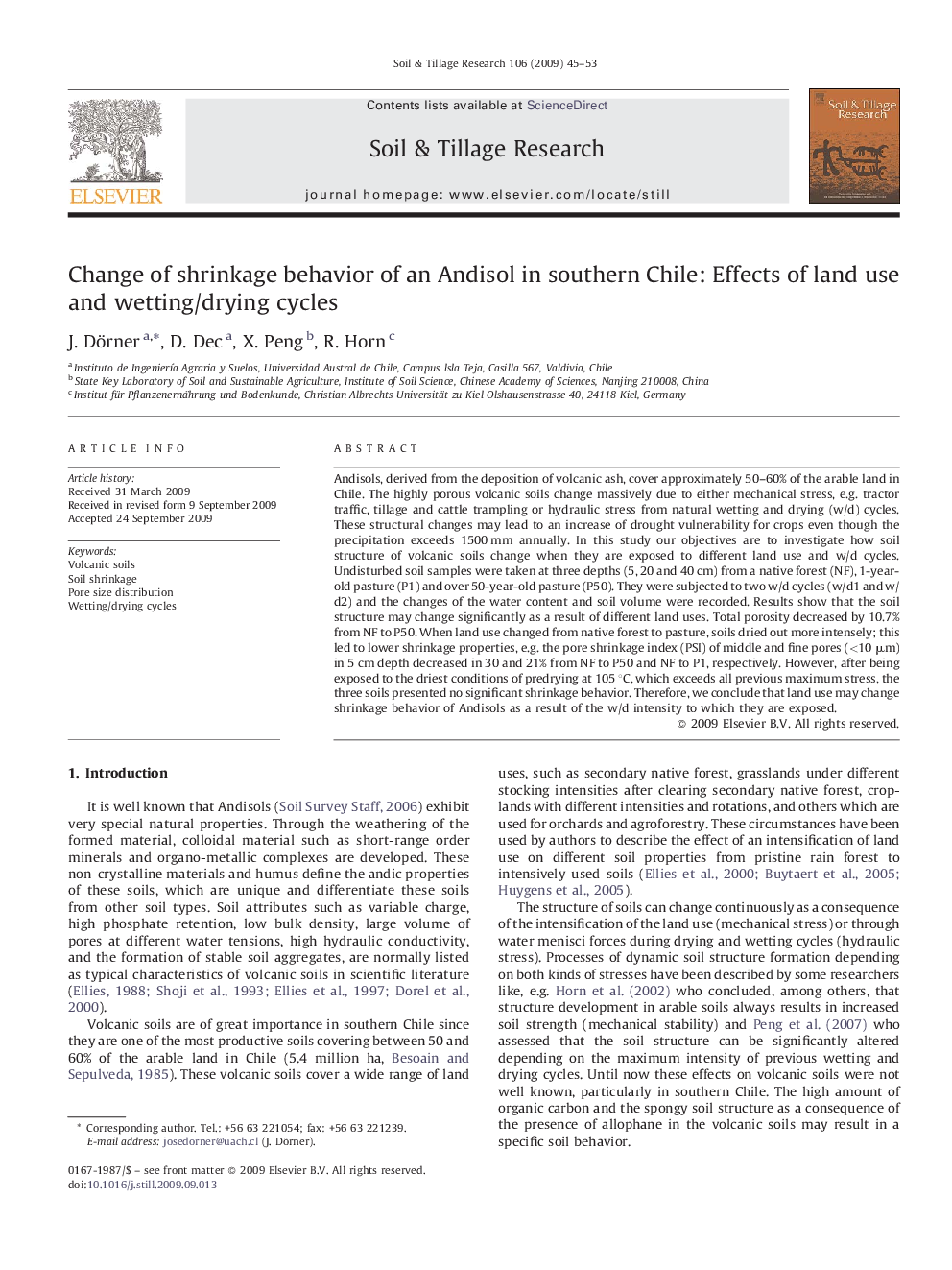| Article ID | Journal | Published Year | Pages | File Type |
|---|---|---|---|---|
| 306265 | Soil and Tillage Research | 2009 | 9 Pages |
Andisols, derived from the deposition of volcanic ash, cover approximately 50–60% of the arable land in Chile. The highly porous volcanic soils change massively due to either mechanical stress, e.g. tractor traffic, tillage and cattle trampling or hydraulic stress from natural wetting and drying (w/d) cycles. These structural changes may lead to an increase of drought vulnerability for crops even though the precipitation exceeds 1500 mm annually. In this study our objectives are to investigate how soil structure of volcanic soils change when they are exposed to different land use and w/d cycles. Undisturbed soil samples were taken at three depths (5, 20 and 40 cm) from a native forest (NF), 1-year-old pasture (P1) and over 50-year-old pasture (P50). They were subjected to two w/d cycles (w/d1 and w/d2) and the changes of the water content and soil volume were recorded. Results show that the soil structure may change significantly as a result of different land uses. Total porosity decreased by 10.7% from NF to P50. When land use changed from native forest to pasture, soils dried out more intensely; this led to lower shrinkage properties, e.g. the pore shrinkage index (PSI) of middle and fine pores (<10 μm) in 5 cm depth decreased in 30 and 21% from NF to P50 and NF to P1, respectively. However, after being exposed to the driest conditions of predrying at 105 °C, which exceeds all previous maximum stress, the three soils presented no significant shrinkage behavior. Therefore, we conclude that land use may change shrinkage behavior of Andisols as a result of the w/d intensity to which they are exposed.
